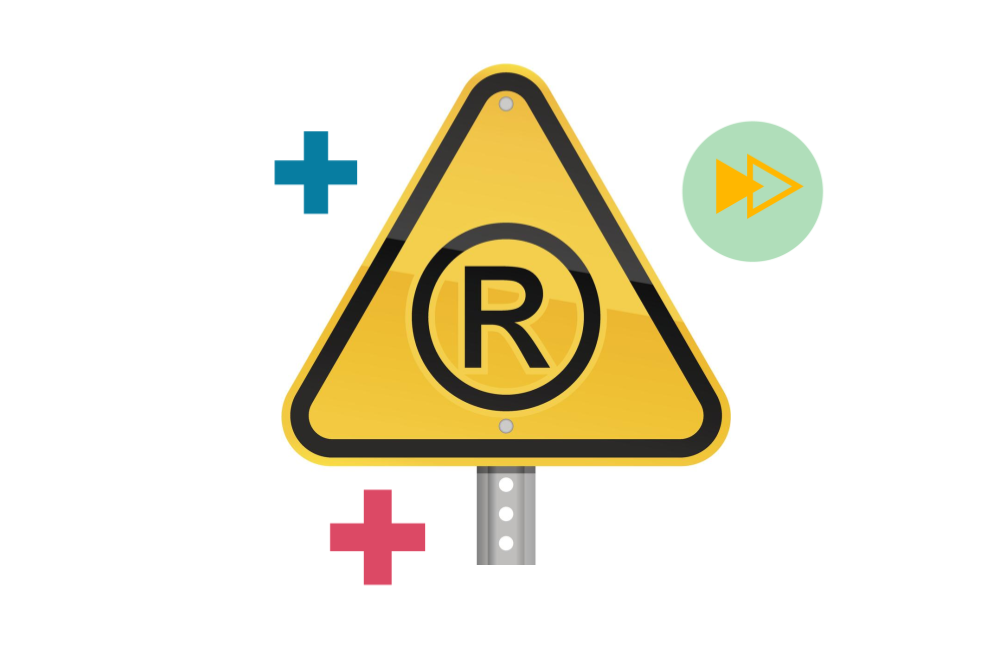
Author Matt Sammon
Trade Mark infringement can come in many shapes and sizes, but why is it something to be concerned about? You invest a significant amount of time and energy in building your business, getting your products or services out there, telling people all about them and building relationships with customers. If all goes well you build a good brand reputation and make money. One way to look at trade mark infringement is like an anchor holding you back, your investment in promoting your brand becomes less effective and you lose custom.
In this article, we define trade mark infringement and explain everything you need to know about preventing any costly infringements within your brand’s IP portfolio.
What is Trade Mark Infringement?
Trade mark infringement is the unauthorized use of a trade mark by a third party that misleads and/or causes consumer confusion as to the origin of a product or service. It’s a frustrating and often costly matter for all brand owners.
The risks of Trade Mark Infringement
The use of an identical or similar trade mark, by a competing business, will see customers confused and engage with the wrong company, and may also lead to them being disappointed to the extent that they refuse to engage with your company in the future. This can lead to:
- Loss of sales and a drop in income
- Harm to your reputation and loss of consumer confidence
- A drop in the value of your brand and company
- Losing your market share
- A leg up for your competitor
How to protect against Trade Mark Infringement
Registering your trade marks secures you a monopoly in the use of those trade marks for the goods and services for which they are registered. For further guidance, see our earlier article explaining what you can register as a trade mark.
This in turn gives you the rights to prevent the use of:
- An identical mark for identical goods or services
- An identical mark for similar goods or services, where the consumer is liable to be confused
- A similar mark for identical or similar goods or services, where the consumer is liable to be confused
- A similar mark for dissimilar goods or services, if your mark has a reputation and the use of the mark would take advantage of or be detrimental to the distinctive character of your registered mark.
If another business is using a trade mark similar to your own and it is liable to cause damage to your business then there is usually action that can be taken to prevent this.
Protecting unregistered Trade Marks
If you don’t have a registered trade mark but have used a mark for a period of time and have built a reputation then you still have a cause of action under the law of ‘passing off.’ However, your options are more limited so it pays to secure registration of your trade marks where possible and as soon as you can.
The consequences of infringing a Trade Mark?
You may have decided on a great name for your business or product, but if someone else has already secured a trade mark registration for a confusingly similar name, then you run the risk of infringing their registered rights, whether you intend to or not.
If you infringe a trade mark then you may potentially be subject to:
- A court injunction to prevent your continued use of that trade mark
- An order to pay damages or hand over the profits you have made from using that trade mark
- An order to pay the legal costs of the trade mark owner
This is of course the worst-case scenario and usually a third party will notify you if they have concerns and allow some time to take advice and consider appropriate action to avoid these penalties. However, perhaps the biggest risk is the loss of the time and energy you have put into promoting a trade mark and the reputation you have gained.
How to avoid infringing Trade Marks
The key here is to have a search conducted and take advice before adopting a trade mark. This will help keep you out of trouble and protect your investment. If you infringe a trade mark then you may be forced to change the name of your business or products which can destroy the goodwill you have generated and result in you needing to re-invest to build the brand once again. In addition, there are costs involved in developing and implementing a new brand, not to mention the time investment required.
The best way to protect against Trade Mark infringement
The first step is to ensure that you have a search conducted to ensure that your use of a trade mark will not infringe any existing registered trade marks – then you can register your trade mark. It is important to ensure that the right marks are registered for the right goods and services. This will:
- Help to ensure you can trade using these trade marks without infringing third party rights;
- Protect your investment in your business and allow you to safely build your reputation;
- Put you in a position to take action to prevent others infringing your trade marks;
- Serve to notify others that your trade mark rights exist and will discourage them from adopting a similar trade mark.
Many trade mark infringements that we see are not deliberate attempts to copy a product or service. Whilst counterfeit goods get a lot of press many infringements are accidental and a result of companies not doing their due diligence and launching a brand without knowing what is already out there.
A trade mark doesn’t need to be in use to be effective. If you have searched your business sector online and been unable to find anyone using a similar name, this does not mean you are safe. If businesses are organized they secure registration of their trade marks before launch, which gives them the right to prevent use of a similar mark. If you go ahead and launch your business where there are earlier registered rights you may find yourself subject to trade mark infringement proceedings.
Trade Mark Watching
One way to reduce the risk of third parties infringing your rights is to head off a dispute before it even starts. Many of our clients take advantage of our trade mark watch services . It is possible to monitor trade mark applications that are being filed to identify any that are similar to your own. By challenging the application to register a similar mark you can discourage the owner from adopting that mark and launching their products or services.
Ways to deal with Trade Mark Infringement?
There are many ways to deal with trade mark infringement. In most situations it starts with contacting the infringer and asking them to stop. There is a little more to it than that as there are pre-action protocols that must be adhered which set out the information you must provide when notifying a third party of trade mark infringement. A failure to follow these protocols can have serious implications for the recovery of your costs if the worse happens and you end up having to take the matter to Court.
In the majority of cases a settlement can be negotiated that both parties are happy with. This might include ceasing to use the infringing mark, or limiting the way in which it can be used to avoid any risk of confusion.
However, if an agreement can’t be reached there are a variety of options depending on the nature of the infringement:
- Take down notices – Most online retail and social media platforms, such as Amazon, Facebook and Instagram have their own trade mark infringement policies and you can submit a complaint to have infringing content removed. This is quick and cost effective, but only deals with the problem on that particular platform and can be a little like playing a game of whack-a-mole if there are multiple infringers with multiple accounts on multiple platforms.
- UDRP (Uniform Domain Name Dispute Resolution Policy) – If the infringement occurs as a result of the use of a confusingly similar URL then there is a mechanism to file a claim to have the URL transferred to prevent continuing infringement. This is relatively cost effective, but only governs the use of the URL and not wider use of a trade mark.
- Trading Standards – Trading Standards have powers to seize infringing goods and it is possible to notify them and have them investigate the infringement. This can be effective as it is very low cost, however, Trading Standards are underfunded by the Government and there is a limit to how many cases they can deal with and they will often focus on cases where there is a physical risk to the consumer or an avoidance of tax duties, such as counterfeit tobacco products and pharmaceutical products.
- Intellectual Property Court (IPEC) – You can file trade mark infringement proceedings at the IPEC. The IPEC is a specialized intellectual property court with the aim of making Court action more accessible to smaller and medium sized businesses. Claims for damages are limited to £500,000 and claims to costs are limited to £50,000. The proceedings are more streamlined than the High Court and the case will be heard by a full-time IP Specialist Judge.
- High Court – Often seen as a last resort, a trade mark infringement case can be brought before the High Court. This is a significant undertaking and involves significant costs, but there is no limit on the damages that can be recovered.
If you have concerns about trade mark infringement consult with your Chartered Trade Mark attorney or IP partner to devise a strategy to deal with the matter in a way that balances cost and efficacy. Trade Mark enforcement should constitute part of your business’s IP strategy.
We create real IP value
From the everyday to the IP emergency, our accomplished Chartered Trade Mark Attorneys and IP Solicitors are driven to get the very best outcome for every brief for every client, every time! Sonder & Clay are a full service IP law firm with proven expertise and results in IP protection, strategy, disputes, and exploitation. Learn more about our IP services or get in touch with us for a complimentary IP audit today.



